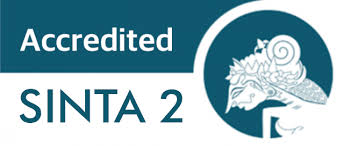Identifikasi Naskah dan Klasifikasi Corrupt Manuskrip Mushaf al-Qur’an Koleksi Perpustakaan Pondok Pesantren Tebuireng
DOI:
https://doi.org/10.29240/alquds.v4i1.1173Keywords:
Manuscript identification, Quran Mushaf, Corrupt text, Scholia formAbstract
This study focused on the Qur’anic mushaf manuscript, the heritage collection of KH. Hasyim Asy'ari, stored in the library of Tebuireng pesantren. In this Pesantren, there are many collections of manuscripts, but this Qur’anic manuscript is never discussed bythe researchers who scrutinize KH. Hasyim Asy’ari’s collection works. The present study had three stages, namely identification of manuscript, criticism of corrupt texts, and the form of scholia manuscript. The purposes of this study were to explain the identity of the manuscript and classify the corrupt and scholia forms that occurred in the Qur'anic manuscript at Tebuireng Pesantren.The method used was the criticism of the texts through the inventory of all faults that occurred in the copying based on the Qur'anic manuscript that had been in tashih. This study found out that (1) the manuscript of the Qur’anicmushaf, the heritage collection of KH. Hasyim Asy'ari, had many mistakes in the process of copying. Frequent mistakes lied in punctuation errors, dots in letters, excess letters, or lack of letters; and (2) The Scholia manuscript form of the Qur’anicmushaf, the heritage of KH. Hasyim Asy'ari, was used to give clarification on the mistakes that occurred in the texts. This is different from the scholia in the manuscripts of the Quran in Indonesia, which is commonly used for maqra' and the Juz
Downloads
References
Agama, Kementrian. Keindahan Mushaf Al-Qur’an Kuno Nusantara. Jakarta: Lajnah Pentashihan Mushaf al-Qur’an Badan Litbang dan Diklat Kementrian Agama RI, 2015.
Akbar, Ali. “Khazanah Mushaf Al-Qur’an Nusantara: Kertas/Alas Tulis.†Khazanah Mushaf Al-Qur’an Nusantara, Jumat, Oktober 2012. http://quran-nusantara.blogspot.com/2012/10/2-kertas.html.
Bagdadi, Hasyim Muhammad al-. Qawaid Al-Khat al-‘Arabi. Baghdad: Dar al-Nahdah, 1968.
Baried, Siti Baroroh. Pengantar Teori Filologi. Yogyakarta: Badan Penelitian dan Publikasi Fakultas Sastra Universitas Gadjah Mada, 1994.
Madzkur, Zaenal Arifin. “Harakat dan Tanda Baca Mushaf Al-Qur’an Standar Indonesia dalam Perspektif Ilmu Dabt.†SUHUF Jurnal Pengkajian Al-Qur’an dan Budaya 7, no. 1 (2014): 1–23. doi:10.22548/shf.v7i1.20.
Permadi, Tedi. “Asal-Usul Pemanfaatan dan Karakteristik Daluang: Bahan Naskah dalam Tradisi Tulis Nusantara - PDF Free Download.†adoc.tips, n.d. https://adoc.tips/asal-usul-pemanfaatan-dan-karakteristik-daluang-bahan-naskah.html.
Pudjiastuti, Titik. Naskah Dan Kajian Naskah. Bogor: Akademia, 2006.
Sirajuddin AR, Didin. Seni Kaligrafi Islam. Jakarta: Pustaka Panjimas, 1985.
Sya’roni, Mazmur. “Ragam Penulisan Mushaf Kuno Di Riau.†In Mushaf-Mushaf Kuno Indonesia. Jakarta: Puslitbang Lektur Keagamaan, 2005.
Yasin, A. Mubarok. Profil Pesantren Tebuireng. Jombang: PustakaTebuireng, 2011.
Downloads
Published
How to Cite
Issue
Section
Citation Check
License
Authors who publish with AL QUDS : Jurnal Studi Alquran dan Hadis agree to the following terms:- Authors retain copyright and grant the journal right of first publication with the work simultaneously licensed under a Creative Commons Attribution-NonCommercial-ShareAlike 4.0 International License (CC BY-NC-SA 4.0) that allows others to share the work with an acknowledgment of the work's authorship and initial publication in this journal.
- Authors are able to enter into separate, additional contractual arrangements for the non-exclusive distribution of the journal's published version of the work (e.g., post it to an institutional repository or publish it in a book), with an acknowledgment of its initial publication in this journal.
- Authors are permitted and encouraged to post their work online (e.g., in institutional repositories or on their website) prior to and during the submission process, as it can lead to productive exchanges, as well as earlier and greater citation of published work (See The Effect of Open Access).









